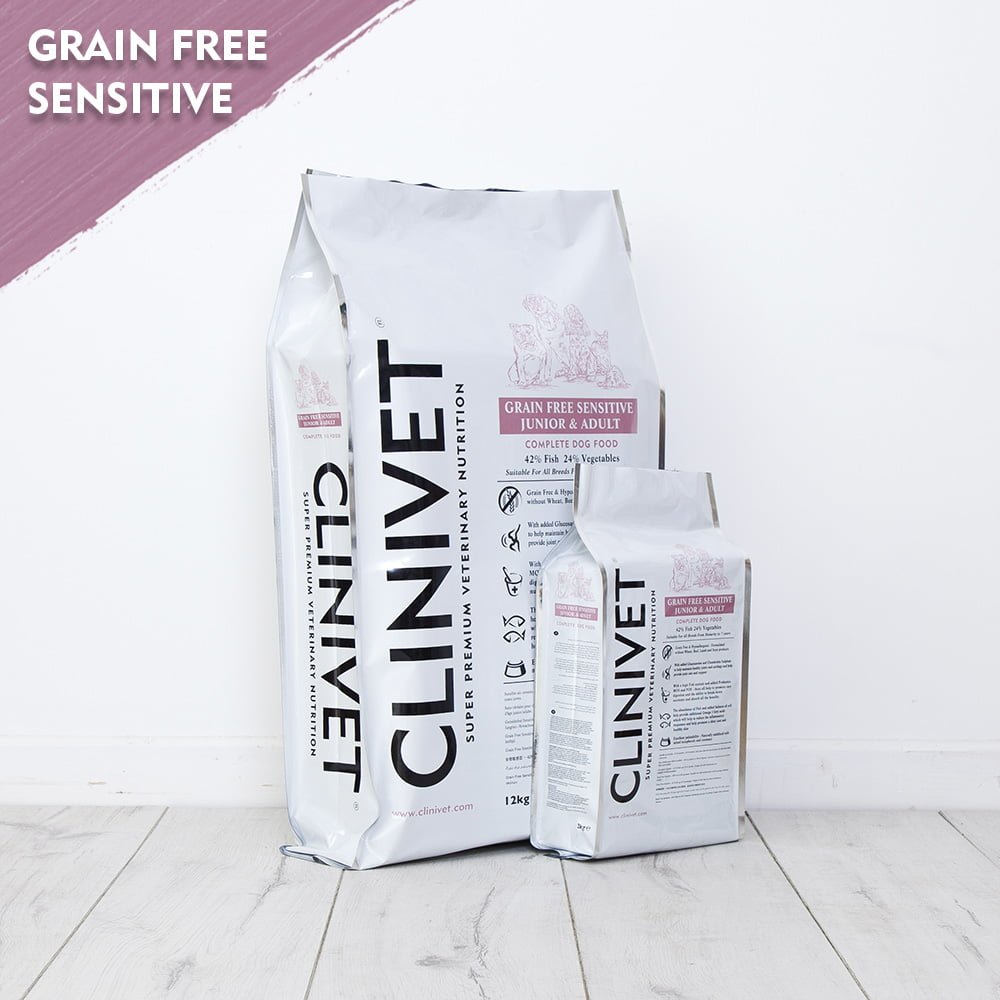
Changing a dog’s food is something lots of people have to do at some point during their time of pet ownership. There are many reasons why you might need to switch to a new brand of dry dog food, whether a puppy is ready to move to adult food or your dog has lost interest in their current meals. Sometimes, food changes are also essential if a dog starts having digestive issues, has developed new sensitivities or is putting on too much weight.
Whatever the trigger, finding the right food and knowing how to transition in a way that avoids common problems is essential to keeping your dog happy and healthy.
Choosing a More Suitable Food for Your Dog
Before switching to a new food, it's important to think about the reasons for making the change; are you supporting your dog's natural growth, managing their energy needs, addressing stomach or skin sensitivities, or adapting to a new life stage or health condition?
When choosing a new food, it’s beneficial to turn to brands that prioritise the use of high-quality, traceable ingredients. The recipe should be developed with nutritional research in mind, ensuring it provides the right levels of protein, fats, vitamins, and minerals. Look for clear labelling and check for any artificial additives. Grain-free or hypoallergenic dog foods can be beneficial too, especially if your dog experiences food-related intolerance and sensitivities.
It’s equally important to match the food to your dog's unique requirements. Consider everything from their age and size to activity level to help you choose the right formula. The Clinivet food selector can help you make the right choice for your dog, recommending the dry premium dog food that’s most likely to meet their needs.
Why Slow Transitions are Essential
You shouldn’t stop one type of food and start another overnight, especially if your dog’s digestive system is used to a certain type of dry dog food. It will take some time for your dog to get used to the new ingredients in the food, and sudden changes can cause digestive upset, like vomiting, diarrhoea, or even refusing to eat. Ideally, you should gradually introduce a new dog food, making the change over a couple of weeks, to avoid any problems.
Step-by-Step Guide to Changing Your Dog’s Food
Before switching your dog's food, it can be beneficial to speak to your vet, particularly if your dog has known health issues or you are making a big dietary change. Once you have the go-ahead, you should stock up on enough of both the old and new food for a gradual transition.
When feeding your dog, you should use weighing scales or standard measuring cups to keep each portion consistent. This helps to avoid under or over-feeding as you move to a new food. Aim for a transition period lasting around 10–14 days. Here’s a recommended schedule, which can be slowed down further if needed:
- Days 1 - 3: Start by providing your dog with a small amount of the new food in a separate bowl from their main meal. This only needs to be a teaspoon to get them used to the new flavours. Some dogs might be cautious at first, so patience is key.
- Days 4 - 6: Check the recommended portion size on the packaging and offer 75% of your dog’s old food with 25% new food. You can now mix the food into the same bowl.
- Days 7 - 9: If your dog is coping well with the change so far, you can give them 50% of the old food with 50% of the new food. Following this increase, if you notice any mild tummy upsets, continue with this ratio for a few more days before proceeding.
- Days 10 - 13: Increase to 75% of the new food and 25% of the old food. By this stage, most dogs will have adjusted to the taste and texture. Continue watching for any signs of digestive discomfort or changes in behaviour.
- Days 14 and beyond: Transition to 100% of the new food. Continue to keep an eye on your dog to make sure the new food is working well for them.
If at any point your dog experiences significant digestive upset, slow down the process and continue with the current ratio until things settle down. In some cases, the new food might not be suitable for your dog, and you may need to try something different.
Additional Advice for a Smooth Transition
Making a smooth transition to a new dog food isn’t just about mixing the old with the new. It’s important to keep a close eye on your dog and be proactive. Here are some essential tips to guide you through the process:
- Monitor your dog's appetite, behaviour, and stools throughout the transition. Healthy dogs should show normal interest in food and not experience any stomach upset.
- Sensitive dogs, or those with a history of stomach issues, may need an even slower transition, sometimes more than two weeks for full adjustment.
- Stick to your dog’s usual feeding schedule and location; a predictable routine can reduce stress and encourage good eating habits.
- Reward positive eating with affection, play, or walks instead of extra treats. This helps reinforce good behaviour at mealtime and prevents overfeeding.
- Watch for signs of food sensitivities or allergies, such as increased scratching, ear problems, or recurring digestive upset.
- For dogs that are reluctant to eat the new food, try mixing in a small amount of a vet-approved topper that won't upset their stomach.
- Keep notes on any physical or behavioural changes. If they persist for more than a few days, or if the transition remains difficult after two weeks, speak to your vet for some more advice on food alternatives or transition strategies.
Buying Premium Dog Food in the UK
All in all, choosing the right premium dog food and transitioning slowly gives your dog the best chance for a happy, healthy life. Taking the time to think about the reasons for making a change, choosing a trusted brand with quality ingredients, and following the steps above will help to make the process as smooth as possible for your much-loved pet.
If you’re considering a change to new dry dog food, take a look at the full range we offer at Clinivet. Our scientifically formulated food is nutritionally balanced and designed for all breeds, life stages, and special dietary needs. For help choosing the right recipe for your dog, don’t hesitate to contact our experienced team today.
